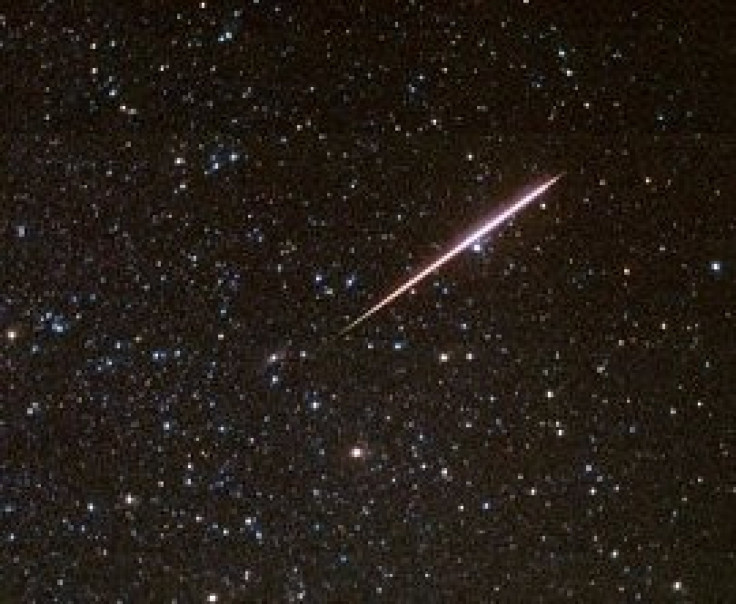Annual Meteor Shower Joined By Planetary Alignment

The planets' get-together is going to happen on August 12 or 13 after sunset. Venus, Mars and Saturn align with crescent Moon popping out of the western twilight before the Perseid meteor shower, which is caused by debris from Comet Swift-Tuttle.
On August 10, Venus Mars and Saturn will form a near isosceles triangle, with Venus securing the bottom, Mars to the upper left and Saturn to the upper right. A thin crescent moon will be joining just below the planets on August 12. On Friday, Moon will have jumped to the left of the planets and moved higher in the sky.
“The Perseids have been observed for at least 2,000 years and are associated with the comet Swift-Tuttle. Each year in August, the Earth passes through a cloud of the comet's debris. The Perseids can be seen all over the sky, but the best viewing opportunities will be across the northern hemisphere,” NASA said in a statement.
The huge comet swings through the inner solar system every 133 years and leaves behind a trail of dust and gravel. When Earth passes through the debris, specks of comet-stuff hit the atmosphere at 140,000 miles per hour and disintegrate in flashes of light.
The Perseids are so-called because the point they appear to come from, called the radiant, lies in the constellation Perseus. The name derives in part from the word Perseides, a term found in Greek mythology referring to the descendants of Perseus.
Some Catholics refer to the Perseids as the tears of St. Lawrence, since August 10 is the date of the saint's martyrdom.
The shower is visible from mid-July each year, with the peak in activity between August 9 and 14 reaching 60 or more per hour. Due to the path of Swift-Tuttle's orbit, Perseids are primarily visible in the northern hemisphere.
“This year's Perseid meteor shower peaks on August 12 and 13, and it promises to be one of the best displays of the year. If forecasts are correct, the shower should produce a peak display of at least 80 meteors per hour on the day. A waxing crescent moon will set before the shower becomes active, setting a perfect stage for meteor watching -- weather permitting,” said NASA.
A meteor or a bright streak of light that appears briefly in the sky, known as shooting star or falling star, appears when a particle or chunk of metallic or stony matter called a meteoroid enters the earth's atmosphere from outer space.
“2010 is a good year for Perseids because the Moon won't be up during the midnight-to-dawn hours of greatest activity. As Perseus rises and the night deepens, meteor rates will increase. For sheer numbers, the best time to look is during the darkest hours before dawn on Friday morning, Aug. 13th, when most observers will see dozens of Perseids per hour,” said NASA.
© Copyright IBTimes 2024. All rights reserved.











